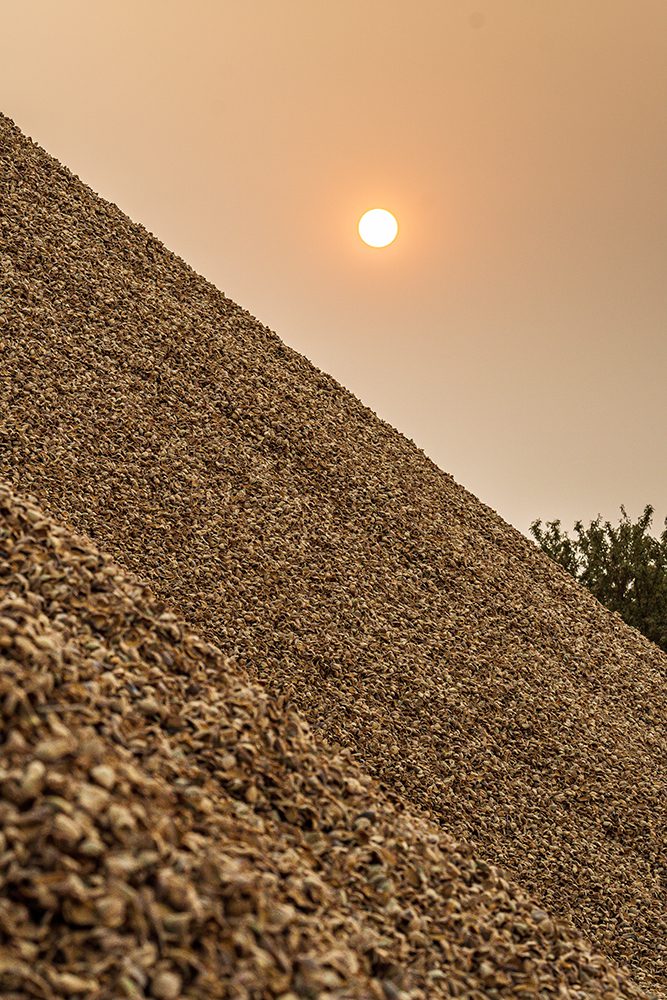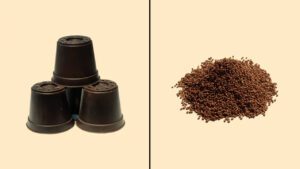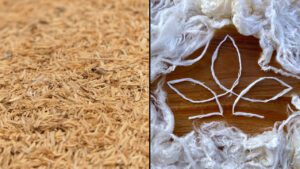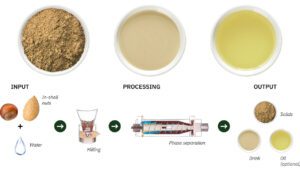
It’s often said that within the almond industry, four products are grown from one crop: the almond hull, shell, wood and kernel. The conversation started years ago: Are there new outlets for these coproducts, and how can we bring more value to growers?
“The Almond Board (ABC) has been investing in biomass research and finding new and more diverse ways to add value to our coproducts for six years now,” said Josette Lewis, chief scientific officer at ABC. “We’ve done some great research to show what’s technically feasible but now are focused on what’s really a possibility from a market perspective?”
In a quest to find added value and purposes for these products, ABC began working with companies in various spaces, including upcycled foods and clothing fibers, and attracting investment in manufacturing and bioenergy in California.
Over the last year, the team has also been actively engaged in finishing food safety studies and working toward FDA recognition that almond hulls are a safe food ingredient. Conversations with global food leaders like MARS and the makers of the KIND bar and providing them with samples of almond hulls will allow brands to begin exploring commercial opportunities.
To achieve success, Lewis expressed how important it will be to make the opportunity more visible to those interested in using almond coproducts, derisk the opportunity and provide information and resources to successfully craft a business case using almond coproducts.

A Substitute Toward Sustainability
In the U.S., 1.7 trillion black horticultural pots are utilized each year. These pots are single-use and designed to last 450 to 500 years, often leading them to end up in landfills and ultimately creating an immense amount of waste.
That’s where NutJobs came in. Founder and CEO Paul Kephart said with his horticultural background, he saw a need for finding an alternative to oil-based plastics, like polystyrene, as an effort for manufactures and growers to be more environmentally conscious. He said the threat is more serious than just environmental, but also is associated with public health.
“Polystyrene takes up 35% of all our landfills, creating environmental problems and possibly health threats” he said.
In exploring a solution, he discovered the almond industry had viable products that fit the bill he was looking for. “When I thought of the almond hull and shell, it passes two of the packaging criteria: impact resistance and thermal performance,” Kephart said.
Their current model allows them to go right into the manufacturing process, so there isn’t a huge learning curve. The design will take hulls and shells from the almond processor to a grinder facility near Turlock. Biocompounding is then performed at a larger scale, producing approximately 4,000 pounds of pellets per hour.
“We’re not actually manufacturing end-use products; we’re manufacturing the formulations in pellet form just like any other kind of plastic that goes to the customer,” he said. Those pellets can then be used by companies to create the pots, just like how they are using plastic to do so now.
“If we can get close to parody with the current oil-based products, that’s a win for everyone,” he said. “That means great amount of adoption and greater volumes of application.”

Shelling Out Food Solutions
The food sector is another area where almond byproducts are bound to have an obvious fit. Re-Nut, a Swiss-based food technology startup uses proprietary manufacturing processes to utilize in-shell almonds to product multiple food products.
Co-founder and CEO Roland Laux said their scope of work has included coffee, herbs and spices, and chocolate, and now they’ve recently turned their attention to the “huge category” of nuts.
The process includes taking the whole nut, including the kernel and shell, adding water and milling to produce a slurry. The slurry then goes through a decanter to separate the solids (almond flour), from the liquid (almond drink), from the oil (almond fat).
Laux explained nut processors will also reap the benefits of utilizing raw almond materials. They can expect an increase of yield (boost of yield per pound of raw materials), lower costs (less raw materials and processing costs), product innovation and renovation (high fiber, antioxidants, clean label, sugar reduction), and environmental sustainability (improvement of sustainability footprint).
The hope of Re-Nut is to convert these outputs into standalone products, like the almond drink, or implement them into already-loved foods like bakery items, spreads and ice cream.
“We just obtained the regulatory approval for commercializing these products in the U.S.,” Laux said. “Our purpose is to bring this beautiful almond with the shell into the nutritional cycle.”
From Farms to Fabrics
Clothing made from almonds, now that’s a wild concept, right? Believe it or not, it’s not that farfetched. Taylor Heisley-Cook and her team at The Hurd Co. are rooted in making clothes from agri-waste.
“When most people reach for their favorite t-shirt, they don’t often think about what it’s made from, but the apparel industry relies on so much land and water every year to grow plants, specifically for apparel production,” Heisley-Cook said. “By 2030, that demand is expected to double, which is not possible.”
Their philosophy is land and water should be prioritized for food growth, and in turn, the by-products from those systems can be repurposed to make clothes.
The apparel industry currently utilizes natural, synthetic and manmade cellulosic (MMC) fibers for today’s apparel. MMC fibers are made from a specific type of tree grown exclusively for apparel, and it’s a growing industry, expecting to reach $60 billion by 2028.
“We take almond orchard chippings and use our patented process to transform it into agrilose, which is an MMC pulp made from 100% agricultural waste, in this case, almond trees,” she said.
They’ve been able to produce it at the same quality and price as traditional pulp. Being a closed-loop system, they have a zero-emissions process that uses half as much water and 90% less energy than traditional pulping technology.
They’ve successfully made fiber from agrilose and are now working to optimize the production system to produce clothing fabric.

Creating the Innovation Environment
Beam Circular is a nonprofit organization working to connect the dots between innovators, government, large-scale businesses, the ag industry and communities to ignite real action in the byproduct innovation space. They intentionally work in Stanislaus, Merced and San Joaquin counties. Not only are the top global agricultural leaders grouped in these counties, but the Bay Area is also next door, providing the biotechnology and innovation resources needed for success.
“We are seizing this opportunity through public-private collaboration and the launch of what we call the bioeconomy, agriculture and manufacturing, or BEAM, initiative,” said Karen Warner, CEO of Beam Circular. “Our work really takes place as a portfolio of projects, strategies and programs, all of which are designed to be a supportive environment and ecosystem for companies and innovators.”
They focus within feedstocks, or biomass of primarily agricultural residues, and are very interested in almond byproducts and orchard materials coinciding with its abundance in California. From there, the conversion process and product development are a world of untapped potential, and the global bioeconomy is growing exponentially.
“There are estimates the global value of the bioeconomy in the coming one to two decades will be between $4 trillion and $30 trillion,” Warner said. “In particular, a transition from petrochemicals as a core input to many different industries to these organic materials and ideally the waste and byproducts of existing food and ag products as the inputs for many different useful products.”















